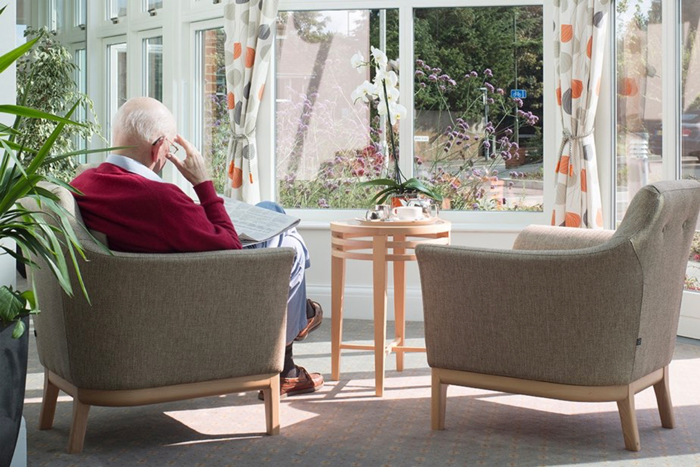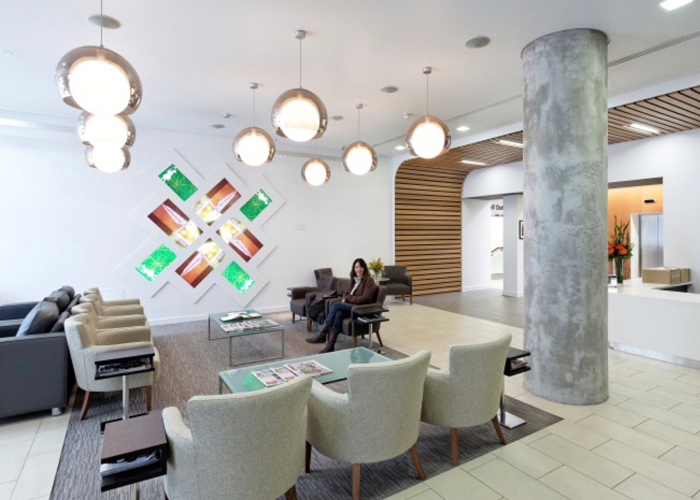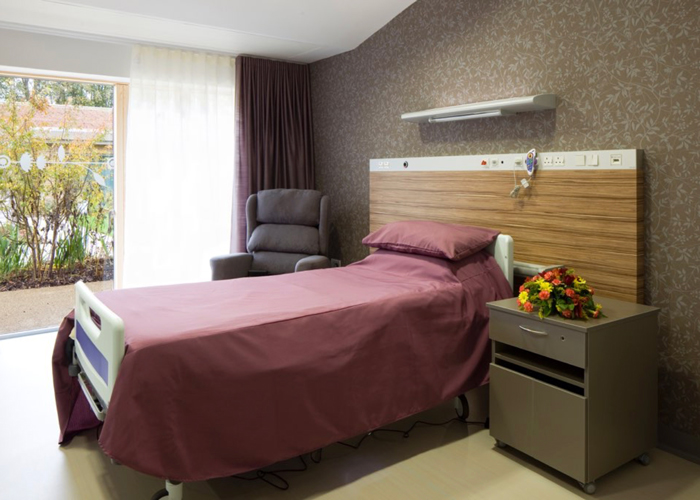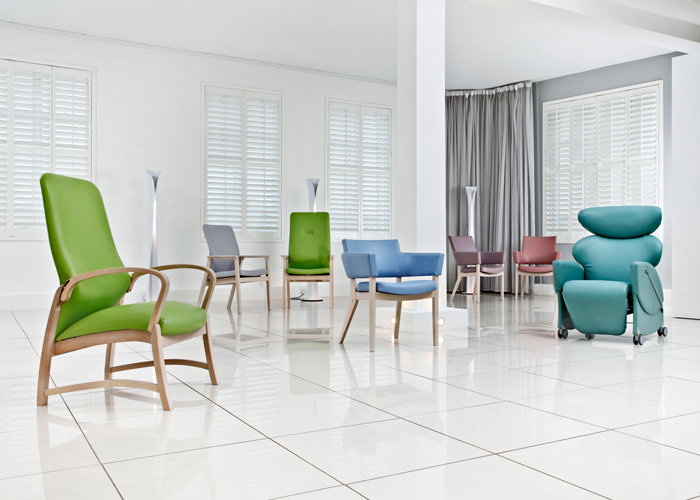The Future of Design for Healthcare Settings
Healthcare in all its capacities hasn’t been out of the headlines for the past year, it has been debated on, criticised, praised, exposed shortcomings in the current systems and more during the Covid pandemic and now it is time to take a look at it from a design perspective. I caught up with Tommy Cairns from Three Percent, Carmel Satterthwaite, Business Development Manager at Teal Healthcare and Jason Brown, Director of Design & Development at Knightsbridge Furniture, to discuss the pandemic and the future of Healthcare.

The first question I wanted to cover with the interviewees was how the pandemic has impacted the way in which we access healthcare. Tommy quickly pointed out the initial panic factor: ‘from the public point of view: how are we going to visit the doctors? How are we going to visit a care home?” These were the questions that required answers as the pandemic took stride. Questions that weren’t fully answered by PPE alone. This touches on the timescale of the pandemic and how rapidly or not the systems in place have had to adapt to the ups and downs of the crisis. Tommy confirmed to me the unpredictable nature of the pandemic by saying that his answers to my questions six months ago would have been very different. Jason also raised a great point about the public’s perspective on access during this time:
‘People will always need one to one assistance and care but I would like to think that the last year or so has re-addressed what people regard as urgent and how they will use A & E departments particularly in the future.’
He went on to highlight how the forced rise in digital consultancy has been effective in providing help during this time, demonstrating simply that healthcare has not only changed over the course of the pandemic but moved on significantly in some areas. Developments like this, will impact the future of design for the healthcare industry but to what scale is still unknown. As well as the initial questions that the pandemic raised around accessibility, another big question is what if it happens again? This is why Tommy highlighted that his answers six months ago would have been different. The pandemic raised serious dilemmas on whether or not to shift investment to retrofitting or concentrating on adapting future projects. For example, how easy will it be to refurbish a health centre to provide external shelter for those queuing outside? Another factor that didn’t help the decision dilemma was the reality of when the industry could resume and when it could, making sure practises were and are covid safe. These decisions, he said, have started to be finalised as the vaccination programme in the UK has made serious headway for opening up the country again and providing a sense of stability.

So once these decisions are made, will we see changes to layout design in Hospitals, Residential Homes, etc? Carmel suggested that those who are designing the structures of Residential Homes for example will be looking at:
‘making spaces where people can be in isolation more as well as maybe more dining rooms with fewer occupants, for example, so that people don’t have to come together during a pandemic in such large volumes.’ The very problems that have occurred during the current crisis. Jason agreed but believes the changes won’t be extreme: ‘I am sure it will have a long lasting effect on the design and layout of all care settings but not a dramatic one. By nature they are very ‘hands on’ environments so there will always be a point where a balance has to be struck between infection preventative design and delivery of the services required.’
This also highlights that despite any potential changes, when it comes to design for the Healthcare Industry clinical responsibility has always been part of the brief.

‘Infection Control has long been a major focus within hospitals.’ said Carmel and she went on tell me about the ‘superbug’ Clostridium Difficile breakout in 2007: ‘ensuing deaths of 90 patients within 2 hospitals of the same Trust which brought a focus to design, layout and utilisation of hospitals.’
Demonstrating that this particular pandemic has undoubtedly thrown up new design sticking points to be solved, for example the consideration of one way systems, it is not the first instance to bring, as Carmel says, ‘focus’ to layout design.
It is the details of healthcare design, such as the fabrics and wallpapers, that illustrates the ins and outs of the clinical responsibility that designers must consider.
‘Furniture designers have a role to play in creating cleanable surfaces with easy access to all areas for cleaning and minimum areas that can harbour dust.’ said Carmel, something that Tommy also confirmed when he spoke about antimicrobial fabrics. It leads back to infection control. For those using these healthcare spaces, the clinical details have always been there but they aren’t noticeable, details such as the fabric specifications. Tommy talked me through the specifications of AGUA Linetta – just one of the many fabrics that can be used in Healthcare settings to mitigate infection control:
‘Resistant to microbial or fungal growth including Salmonella, E Coli and MRSA.’ Whilst this requirement is down to the manufacturer, Carmel highlighted to me the range of criteria that the designers at Teal work on: ‘to enhance safety and well-being, focussing on: posture and tissue viability, infection control and reduction of risk and manual handling and manoeuvrability’.

Another example that these design considerations have been in place long before the covid crisis. It also raises the real issue that design in this field has always been a moving target, Jason told me:
‘We are also consistently changing features in our products to cater for conditions and illnesses as they are being identified and categorised by all authorities.’ Change, therefore, is always inevitable within this design field. Though specifically on post-covid change, Jason said: ‘One area I can see growing demand for performance changes is from the vinyl fabric or faux leather suppliers. Cleaning regimes are naturally increasing in intensity and this does put a lot of pressure on the performance of upholstery fabrics’.
These changes raise the ever relevant conversation on ‘design middle ground’ – the marrying up of functionality and aesthetics, something that is under extreme scrutiny when it comes to healthcare. I asked Tommy if in a post pandemic world the fear factor would influence the design process. Tommy says for some yes, but this balance is something he has been working on for many years and he believes there is room for both quite comfortably. For him, a successful healthcare project is one which: “is non clinical in looks and clinical in practise.’ There is both a clinical and wellbeing responsibility that designers have to be aware of, something that Jason also raised:
‘I don’t feel moving to moulded plastic chairs is the answer, especially when we have to bring ergonomic excellence, comfort, functionality and user dignity into the mix.’
When it comes to design and healthcare there are some real ramifications from the Covid pandemic which will bring about change but the foundations on which the designers already work have been in place for a long time and will continue to adapt as necessary.
Thank you to Tommy, Carmel and Jason for their time.
Contact Teal through BCFA Product Finder
Contact Knightsbridge Furniture through BCFA Product Finder
The BCFA Product Finder is a unique search engine created especially for interior designers to source contract furnishing companies. Utilising this platform will support your findings for upcoming projects, with over 200 members profiles showcasing the latest product launches, new materials available, industry news and design trends.




